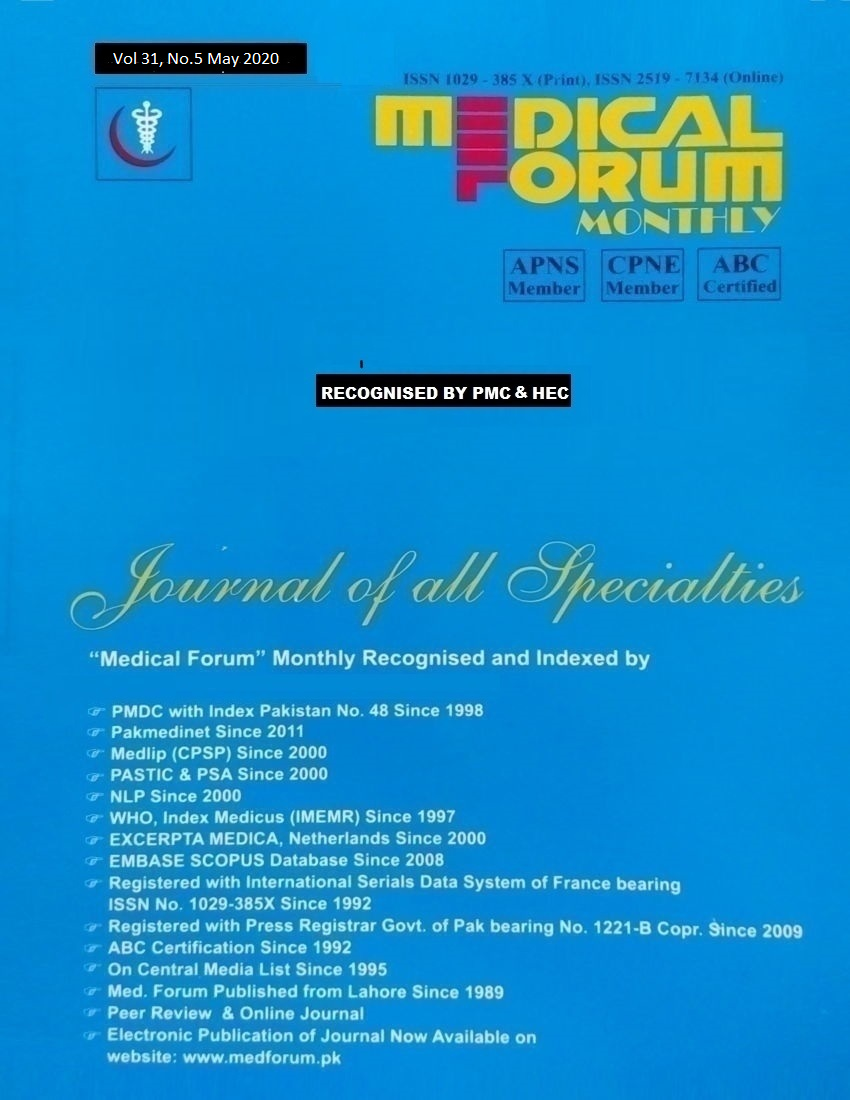
16. Comparison Between Topical and Intravenous Xylocaine on Pharyngo-Laryngeal Complications in Breast Surgery Patients
Muhammad Shazad1 and Syed Muhammad Nadeem2
ABSTRACT
Objective: to compare the immediate pharyngo-laryngeal complications using topical and intravenous lignocaine in daycase breast surgery patients.
Study Design: Randomised control trial study.
Place and Duration of Study: This study was conducted at the Department of Anaesthesiology , ICU and Pain medicine,Liaquat National Hospital, Karachi during July 2009 and August 2010.
Materials and Methods: In this article, we included eighty six ASA I and II, elective breast surgery female patients. Patients were randomized into group I (intravenous lignocaine) and group T (topical lignocaine).Topical lignocaine was sprayed using tongue depressor over base of tongue and posterior pharynx area. After one minute of propofol induction, consultant anaesthetist inserted appropriate size deflated LMA. Conditions for LMA insertion i.e; gagging, coughing or laryngospasm were recorded. Acceptable conditions if no gagging, coughing or laryngospasm resulting in successful first-pass placement and ventilation recorded.
Results: Elective breast surgery patients were randomly assigned to two groups, group I (intravenous lignocaine) and group T (topical lignocaine).The mean age in group I was 30+/- 9 years and in group T it was 31+/- 10 years. There were 86 females of which 45 females in group I and 41 females in group T. LMA insertion was compared among 86 females who underwent breast surgeries. Immediate pharyngo-laryngeal complications were noted in 5 (11.1%) in group I patients while none in group T patients. In comparison between age less and more than 30 years patients, more complications in more than 30 years age group and more in I group patients 5 (24%) while only 1 (4%) in group T (p<0.04).
Conclusion: Topical 4% lignocaine application spray over base of tongue and posterior pharynx area reduces immediate pharyngo-laryngeal complications in day case female patients more effectively than 2% intravenous lignocaine without using any intravenous muscle relaxation agent. Improving patient comfort and readiness for early discharge in ambulatory surgeries may be attributed to this anaesthesia technique.
Key Words: LMA, gagging, coughing, laryngospasm
Citation of article: Shazad M, Nadeem SM. Comparison Between Topical and Intravenous Xylocaine on Pharyngo-Laryngeal Complications in Breast Surgery Patients. Med Forum 2020;31(5):66-69.
